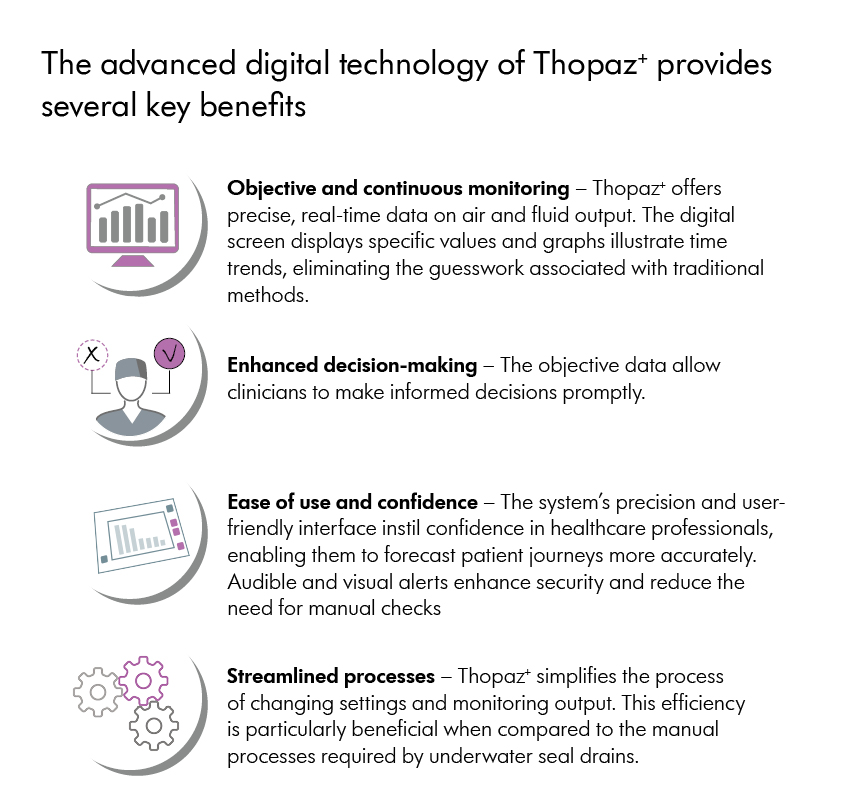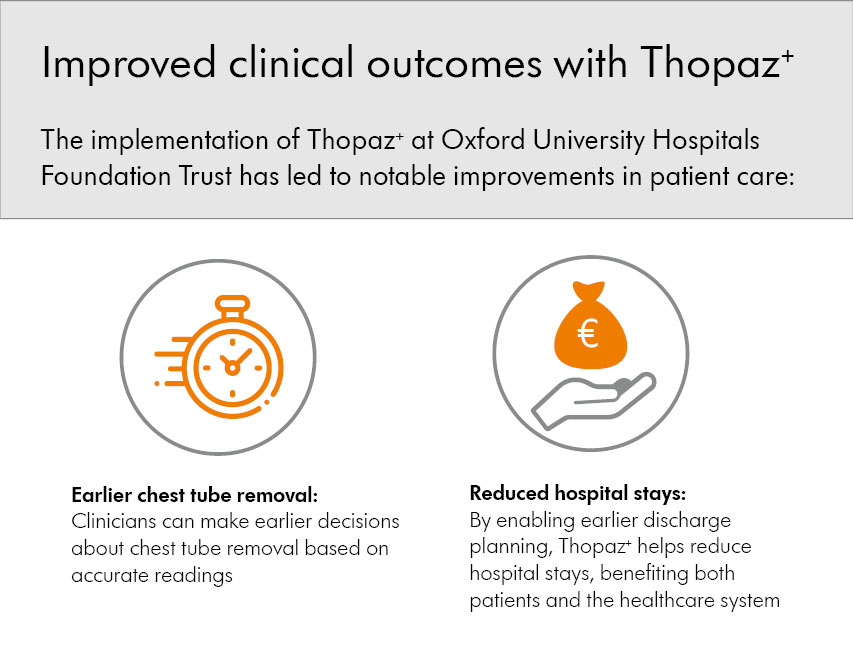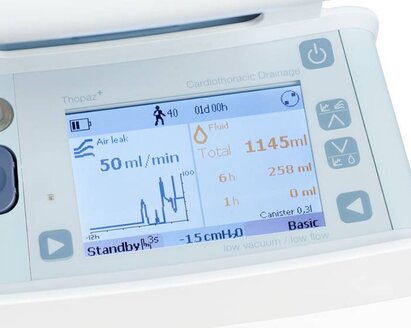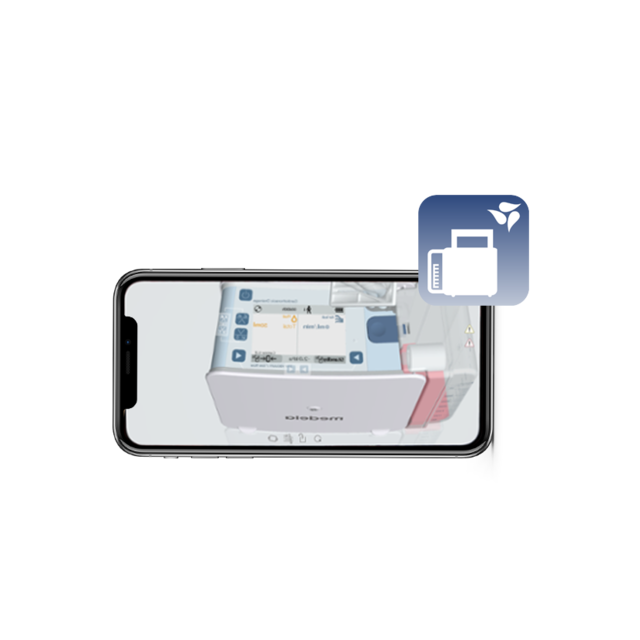Thopaz+ is a portable digital chest drainage and monitoring system developed by Medela. It offers continuous objective monitoring of air leaks and fluid output, which facilitates assessment of patients' progress, as well as standardisation of chest drainage management across different departments.
Interviews with healthcare professionals at Oxford University Hospitals NHS Foundation Trust in the UK have highlighted how the Thopaz+ system has transformed chest drainage management. Initially introduced to the Cardiothoracic Department as Thopaz in 2012, the positive experience with Thopaz and its successor Thopaz+ digital drainage device led to its spread into respiratory, critical care, trauma, paediatrics, gastroenterology and neurosciences, driven by the nursing staff and clinicians.
Click here to download the 2-page summary of the report.
Challenges with underwater seal drains
Underwater seal drains have been the standard for chest drainage, but they come with significant challenges:
- Ambiguity and interpersonal variability – Estimating air leakage using visual interpretation of bubbles and fluid output is subjective and varies between individuals.
- Inaccurate measurements – Lack of precise data makes it difficult to monitor progress accurately.
- Manual monitoring – Healthcare staff often need to manually mark the canister to track fluid output, a process that is prone to errors, especially if the canister is knocked over and fluid displaces.
- Delayed decision-making – The subjective nature of the data often delays critical decisions such as chest tube removal and patient discharge.
Improving Decision-Making and Patient Outcomes with Thopaz+

Objective and Continuous Monitoring
Clinicians from Oxford described how the objective and continuous monitoring provided by Thopaz+ removes the ambiguity and interpersonal variability of estimating leakage associated with visual interpretation of bubbles and fluid output with underwater seal drains.
Enhanced Decision-Making
The specific values displayed on the Thopaz+ digital screen makes it easy to identify air and fluid output at a given timepoint and graphs illustrate time trends, allowing progress to be monitored. One interviewee provided an insightful scenario, in which an overnight call about a precise leak of 300 ml/minute identified by Thopaz+ – rather than a vague report of “the patient has bubbles” – allows an on-call clinician to decide whether immediate intervention is needed.
Enhanced Decision-Making
The specific values displayed on the Thopaz+ digital screen makes it easy to identify air and fluid output at a given timepoint and graphs illustrate time trends, allowing progress to be monitored. One interviewee provided an insightful scenario, in which an overnight call about a precise leak of 300 ml/minute identified by Thopaz+ – rather than a vague report of “the patient has bubbles” – allows an on-call clinician to decide whether immediate intervention is needed.
Ease of Use and Confidence
The precision of measurements and greater ease of use afforded by Thopaz+ instil confidence in healthcare staff managing their patients and the ability to more accurately forecast a patient journey is extremely valuable. Interviewed clinicians spoke of the benefits of reading objective values more easily from the digital screen, the convenience of changing between settings, and the security provided by audible and visual alerts, which means – for example – staff do not have to make marks on the containers to monitor output or make estimations if underwater seal drains are knocked over and fluid displaces.
Streamlined Processes
Thopaz+ also facilitates earlier chest tube removal and discharge planning in a way that is not possible with underwater seal drains. One clinician explained that they begin to make plans for morning discharge if a patient has a downwards trend of air leak reading to low ml/min within 2 hours of surgery rather than waiting for a morning review before planning for discharge. Use of Thopaz+ thus allows clinicians to make earlier decisions about pulling the chest tubes and getting people out of hospital earlier – an evident benefit for both patients and the healthcare system.
Real-World Experience of Thopaz+

The real-world experience of Thopaz+ at Oxford University Hospitals demonstrates how this digital drainage system enhances decision-making and clinical management. The system's ability to provide precise, objective data leads to better patient outcomes and greater efficiency in healthcare delivery.
Once you get to know the system, [you] would miss it. The drain is telling you what's happening with the patient and makes it, I think, so much safer to make clinical decisions

















